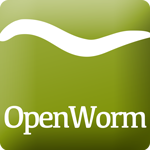After cleaning it up a little I put it into OpenRDF: http://107.170.133.175:8080/openrdf-workbench/repositories/OpenWorm2
There are some discontinuities which make the graph unconnected. The roots in our forest of division trees can be shown with this query:
PREFIX ns1:<http://openworm.org/entities/>These discontinuities have nothing to do with the input errors mentioned in the github issue as all of those in the daughter_of table were easily fixed.
select distinct ?z where { ?y ns1:daughter_of ?z . filter(not exists { ?z ns1:daughter_of ?p }) }
To look at the path-to-root for 'AB plppaaaapa' :
PREFIX ns1:<http://openworm.org/entities/>The code I used to extract and upload: http://pastebin.com/NVnAfD8D
select distinct ?z where { ns1:AB_plppaaaapa ns1:daughter_of+ ?z }
It's just the cell divisions that we've had for some time. We've discussed bringing in volume data for each of the cells in development in order to model differentiation waves discussed by Richard Gordon and colleagues. As of yet, we don't have this data readily available.
